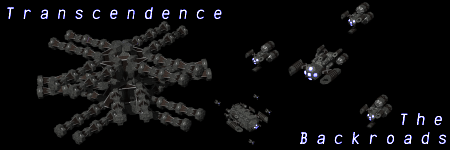» At least one star.
» At least two planets.
» At least one asteroid belt or arc.
» The necessary stargate(s) to access it from neighboring systems.
» At least one friendly station.
» At least one enemy station.
Also, Xephyr is not going to be my deputy this month, given that he’s unavailable for the next few weeks, so I’m currently flying solo on this. Bear with me, please.
Templates will be added here, probably later tonight, and by tomorrow evening at the very latest. In the meantime, part of the inspiration for this month was actually this mod on Xelerus by relanat; I encourage you to give it a look if you want to get a head start on things before I get the templates posted.
What I’m covering here is a static system type, not a randomized system type. That is, think Eridani or Rigel Aurelius instead of Lacaille or 70 Ophiuchi. Also, I won’t be dealing with either nebula systems or binary systems, but feel free to give them a shot if you’re feeling adventurous!
First, of course, you need to define the system itself.
Code: Select all
<SystemType UNID="&sySystemUNID;"
noExtraEncounters="true"
noRandomEncounters="true"
>If you want a random selection of stations to be able to show up here, you can define those as well.
Code: Select all
<Tables>
<!-- Random Stations -->
<FriendlyStations>
<Table>
<Station weight="#" type="&stStationUNID;"/>
<Null weight="#"/>
</Table>
</FriendlyStations>
<EnemyStations>
<Table>
<Station weight="#" type="&stStationUNID;"/>
<Null weight="#"/>
</Table>
</EnemyStations>
</Tables>Now we’re on to actually laying out the system itself. The first thing you to do is get the <SystemGroup started and put in the star itself:
Code: Select all
<SystemGroup>
<Station type="&stStarUNID;" name="Star Name"/>
<AddAttribute attributes="systemType"/>Code: Select all
stStarClassM8 — redDwarfSystem
stStarClassM5 — redDwarfSystem
stStarClassM0 — redDwarfSystem
stStarClassK5 — redDwarfSystem OR KTypeSystem
stStarClassK0 — KTypeSystem
stStarClassG5 — KTypeSystem OR GTypeSystem
stStarClassG2 — GTypeSystem
stStarClassG0 — GTypeSystem
stStarClassF5 — GTypeSystem
stStarClassF0 — GTypeSystem OR ATypeSystem
stStarClassA5 — ATypeSystem
stStarClassA0 — ATypeSystem
stRedGiantStar — redGiantSystemWith the star in place, you can add a planet. The orbit needs described first:
Code: Select all
<Orbitals distance="#" angle="#" eccentricity="#" rotation="#">Once the orbit is described, now we can get on with the planet itself:
Code: Select all
<Group>
<Primary>
<Station type="&stPlanetUNID;" name="planetName" showOrbit="true" />
</Primary>
</Group>
</Orbitals>Code: Select all
<Lookup table="FriendlyStations"/>If your planet is looking a bit lonely, you can give it a moon or orbiting station by adding another <Orbitals> section inside the <Group>. This will add an object in orbit around the planet (or station) defined inside the <Primary> section. You should wind up with something like this:
Code: Select all
<Orbitals distance="#" angle="#" eccentricity="#" rotation="#">
<Group>
<Primary>
<Station type="&stPlanetUNID;" name="planetName" showOrbit="true" />
</Primary>
<Orbitals distance="#" angle="#" eccentricity="#" rotation="#">
<Group>
<Primary>
<Station type="&stPlanetUNID;" name="moonName"/>
</Primary>
</Group>
</Orbitals>
</Group>
</Orbitals>Code: Select all
<Orbitals distance="#" angle="#" eccentricity="#" rotation="#">
<Station type="&stPlanetUNID;" name="moonName"/>
</Orbitals>Code: Select all
<Group>
<Primary>
<Station type="&stPlanetUNID;" name="planetName" showOrbit="true" />
</Primary>
<Trojan>
<Station type="&stStationUNID;"/>
</Trojan>
<Antitrojan>
<Station type="&stStationUNID;"/>
</Antitrojan>
</Group>




